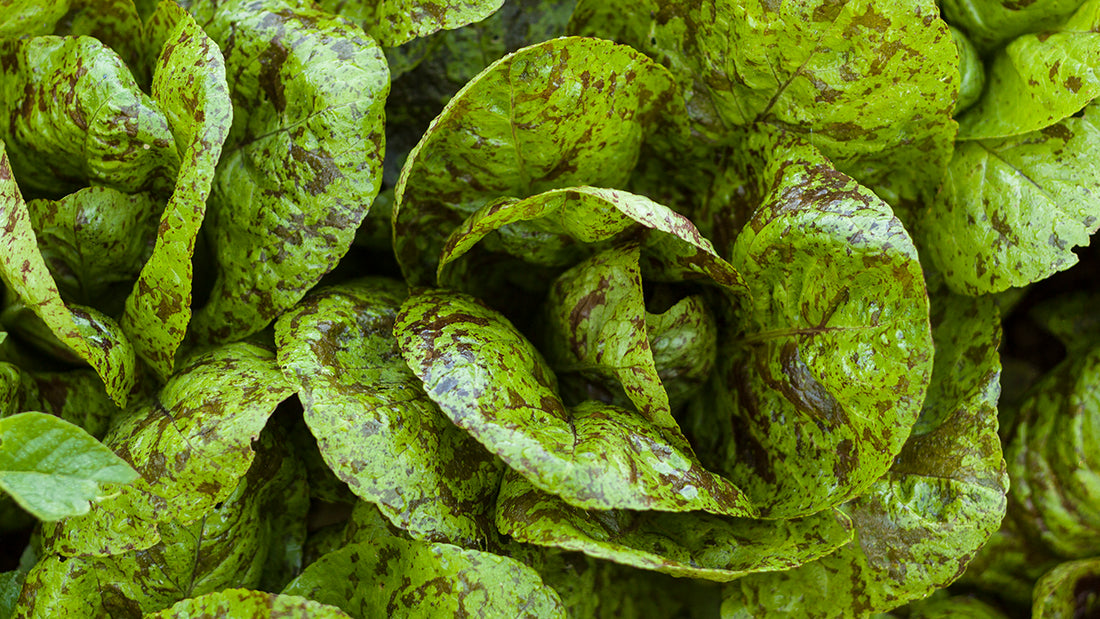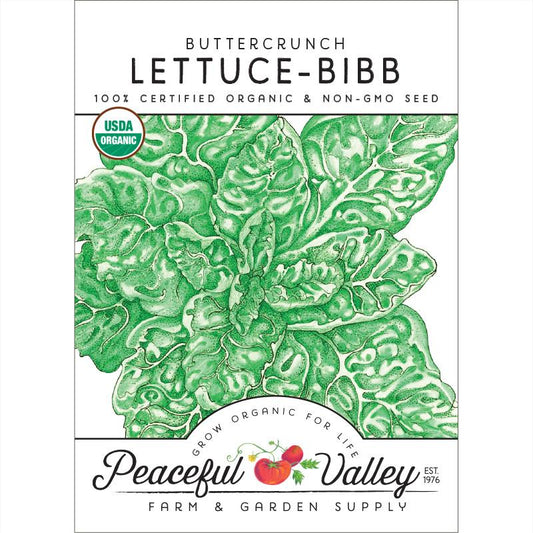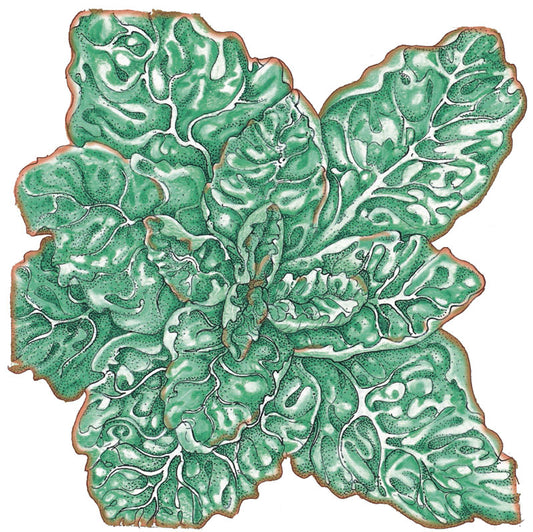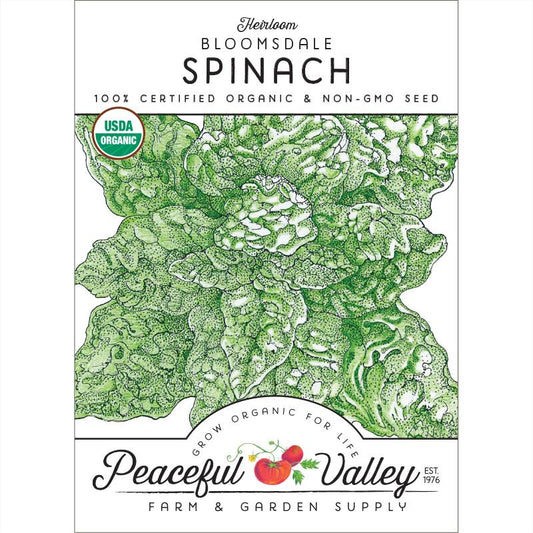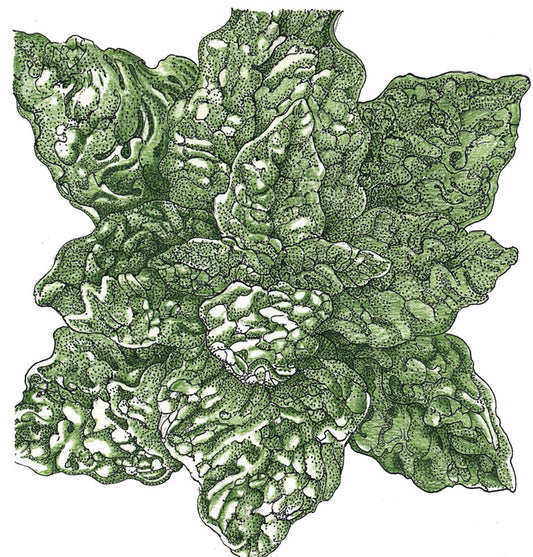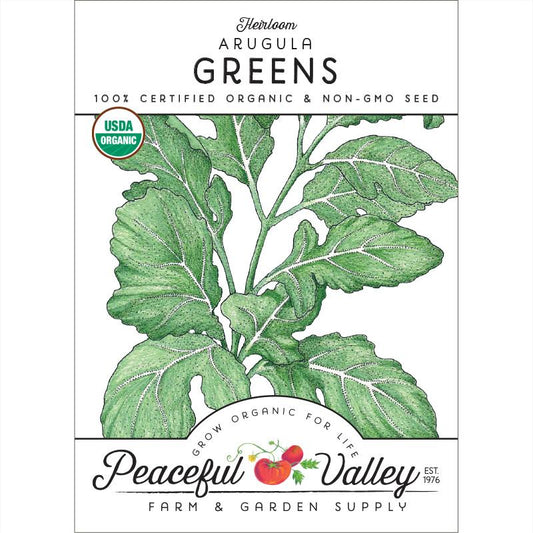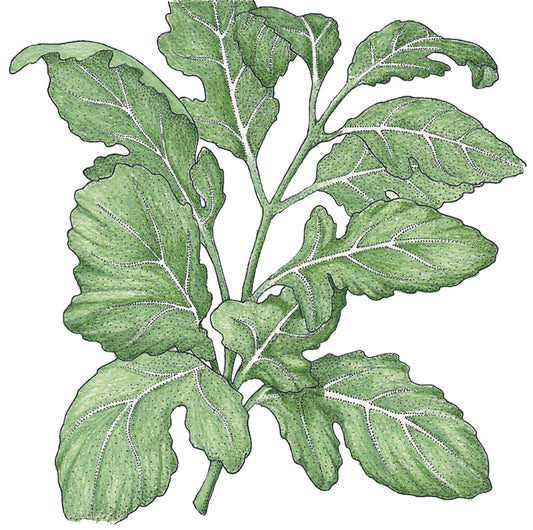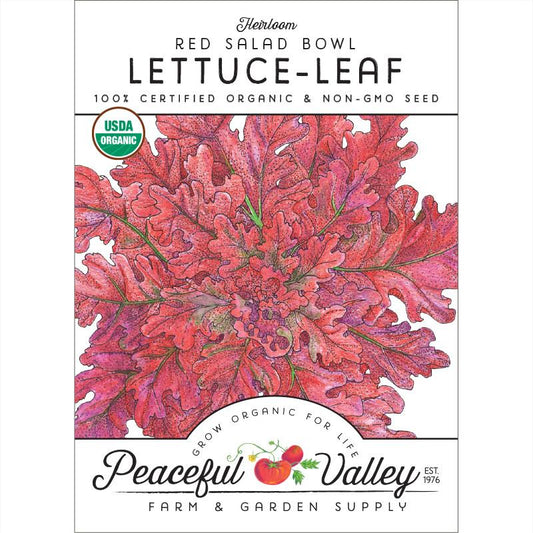Great salads are more than just lettuce. Try adding complex flavors ranging from spicy to nutty, depending on what you grow.
If you're wondering when, exactly, is a good time to plant your lettuce and greens seeds, enter your last frost date (for spring planting) and first frost date (for fall planting) into our Seed Planting Calculator. It will calculate the best dates to direct seed or start seeds indoors.
You can also calculate when to plant your seeds by using the sowing information on the back of the seed pack and counting backwards from your last frost date on your calendar.
Greens & Lettuce Types

Greens: Comprise the foliage or leaves of edible plants (amaranth, chard, chicory, mustard, collards, spinach, cress, radicchio, mache, escarole, bok choy, endive, arugula or shiso) or the leaves of tubers (ie, turnips, beets).
Growing Basics
Soil: Prefers a soil pH between 6.5–7.0 and temperatures of 40–75°F for germination (will tolerate temperatures between 35–75°F, but germination can be unsatisfactory depending on variety and preference). Soil should be well-draining and have plenty of organic matter. Try growing broccoli in some of our Peaceful Valley Organics Potting Soil; it is an excellent, organic all-around mix.
Days to Germination: 2 to 12 depending on variety and conditions.
Seed Longevity: If properly stored, seeds should be viable for about 2–5 years.
Spacing: Varies widely depending on variety; follow packet directions for row and plant spacing.
Companion Planting:
- Companions (lettuce) – broccoli, carrots, beets, onions, radishes, dill, strawberry
- Incompatibility (lettuce) – cabbage, parsley, celery
Water Requirements: Requires even moisture without saturation. Use mulch to assist with water retention and to keep mud off leaves. Head formation is dependent upon regular, even watering. Pay attention to snails, slugs and earwigs harboring in mulch.
Fertilization: Address amendments prior to planting, based on soil analysis. Supplemental dry amendment should be side-dressed to avoid root disruption or with a liquid fertilizer (avoid foliar applications close to harvest as the fertilizer may impart a flavor to the leaves).
Planting & Growing

For transplants to jumpstart season, sow indoors 3–4 weeks prior to planting outdoors. Sow into surface of dampened soilless mix (Quickroot) paying attention to depth specified for variety (typically ¼–½”). Moisten with sprayer or mister when needed. Provide light a few inches above plants to avoid leggy growth. Feed with a dilute foliar fertilizer once the seedlings have their first set of true leaves.
Harden off before planting or cover with cloches or row covers (watch for heat build up that may affect young plants). Set out when danger of frost is past.
To sow directly into the garden, wait until danger of frost has past. Cover seed lightly and tamp down soil gently. Thin after 2-3 true leaves have formed and watch for bird or pest issues with tender growth. Succession plant to ensure a continuous harvest.
Most lettuce and greens prefer cooler growing conditions so plant in the spring or fall, or you can add some shade cloth to extend the growing season. Romaine varieties of lettuce tolerate hotter weather than other types.
Lettuce is also suitable for container gardening if well drained and 6–12” deep. Attention to moisture is critical since containers drain rapidly.
Harvesting
For most greens and non-heading lettuce, cuttings can be made of outer leaves (remove lower leaves first) of plants; let the center continue to grow. This is called a "cut and come again” method of harvesting.To harvest for baby greens, cut when plant is at least 3–4”.
For heading lettuce, harvest entire head when mature and before bolting from age or heat. Some varieties of lettuce can be cut low and a new head will form from the root.
Rinse in cool water and spin off excess moisture before storing in a refrigerator in a sealed container or a plastic bag with end open for up to 10 days. Wrapping leaves in paper towels can help absorb moisture.
Common Pests & Diseases

Caterpillars & Loopers: Margins of leaves eaten. Use beneficial insects or an organic insecticide labeled for loopers.
Lettuce Drop: Beginning on outer margins of head, leaves begin to wilt and eventually collapse. Make sure soil is well-draining to avoid overly wet soils. Practice crop rotation and avoid planting where host plants have been grown such as beans, cauliflower, celery, endive, escarole, peppers, radicchio and tomato or cover crop host plants such as Austrian winter pea, mustards, phacelia and vetch. Treat with an organic fungicide labeled for Sclerotinia.
Mosaic: Light brown discoloration of leaves and curling leaves. Spread by aphids so control with an organic insecticide labeled for aphids.
Powdery Mildew: Caused by excess moisture; use drip irrigation or soaker hose system. Treat with an organic fungicide labeled for Powdery Mildew.
Slugs & Snails: Margins and interiors of heads eaten; slime trails. Prefers young, succulent leaves. Most active at night and foggy days. Eliminate hiding places, hand pick them off, or use an organic insecticide labeled for slugs and snails.
Pest Control – IPM
Important to practice good cultural controls for pest management of lettuce and greens. Cultural controls such as removing plants after harvest (to avoid leaving food for insects to continue to multiply on), use clean transplants, practice crop rotation (e.g. do not plant cole crops in same area for 3 years), use row covers such as Agribon AG15 (apply before insects have arrived).
Common Questions
How do I prevent my greens from bolting? For the most part greens and lettuce prefer cooler temperatures than summer provides. Planting under shade cloth or behind taller vegetable varieties to use their shade can provide sufficient light and cooler temperatures. Using bolt “resistant” varieties can extend the period of successful harvest or sustain through a cooler summer or warm climate areas.
- Bolt Resistant Lettuce Varieties – Freckles, Little Gem, Parris Island, Black Seeded Simpson, Buttercrunch, Green Salad Bowl, Pirat, Anuenue, Divina, Nevada, and New Red Fire.
What can I do if my plants do bolt? Once plants have bolted the harvest material will be bitter or tough. Allowing the seed heads to dry and saving or allowing to drop to respond as a volunteer crop as amenable weather arrives are options. Or remove plants and compost. Replant with a more heat tolerant variety and use shade cloth or plant in an area with afternoon shade may help keep plants cooler.
Why do I have low germination of lettuce seed? If it is fresh seed, the cause is usually inconsistent moisture or hard impact watering. Summer sown seed requires more attention due to higher temperatures and winds. Be sure soil has not crusted over the seed. Newly emerged seedlings are also susceptible to pest damage.
How do I keep enough lettuce for the seasons? Successional planting of lettuce and greens is key to thwart weather fluctuations and allowing continual harvest of young, tender foliage. Cool weather is preferable for sustaining growth successfully, but in warmer months use bolt resistant varieties and carefully monitor for moisture and pest/diseases. Growing plants fast with moisture and nutrients requires some attention to timing for success.
Definitions
Heirloom: Heirloom seeds come from open-pollinated plants that pass on similar characteristics and traits from the parent plant to the next generation plant. Heirloom vegetables are old-time varieties generally which have been in production since before WWII, and have been saved and handed down through multiple generations.
Hybrid: a cross between two or more unrelated plant varieties. The two different varieties are cross bred, resulting in a seed that carries one or more favorable traits (increased yield, uniformity, color, disease resistance.) Hybrid seeds are not GMO, as they are manually cross-bred, not genetically modified in a lab. Hybrid seed is often sterile or does not reproduce true to the parent plant. Therefore, never save the seed from hybrids.
Open Pollinated: generally refers to seeds that will “breed true”. When the plants of an open-pollinated variety self-pollinate, or are pollinated by another representative of the same variety, the resulting seeds will produce plants roughly identical to their parents. Genetic traits may differ only slightly due to variations created by local conditions.
GMO: Genetically Modified Organisms were genetically modified in a laboratory where DNA genes are extracted and mixed with other unrelated plants to improve characteristics. Saved seed will not always be viable and may be trademarked to prevent unauthorized use.

